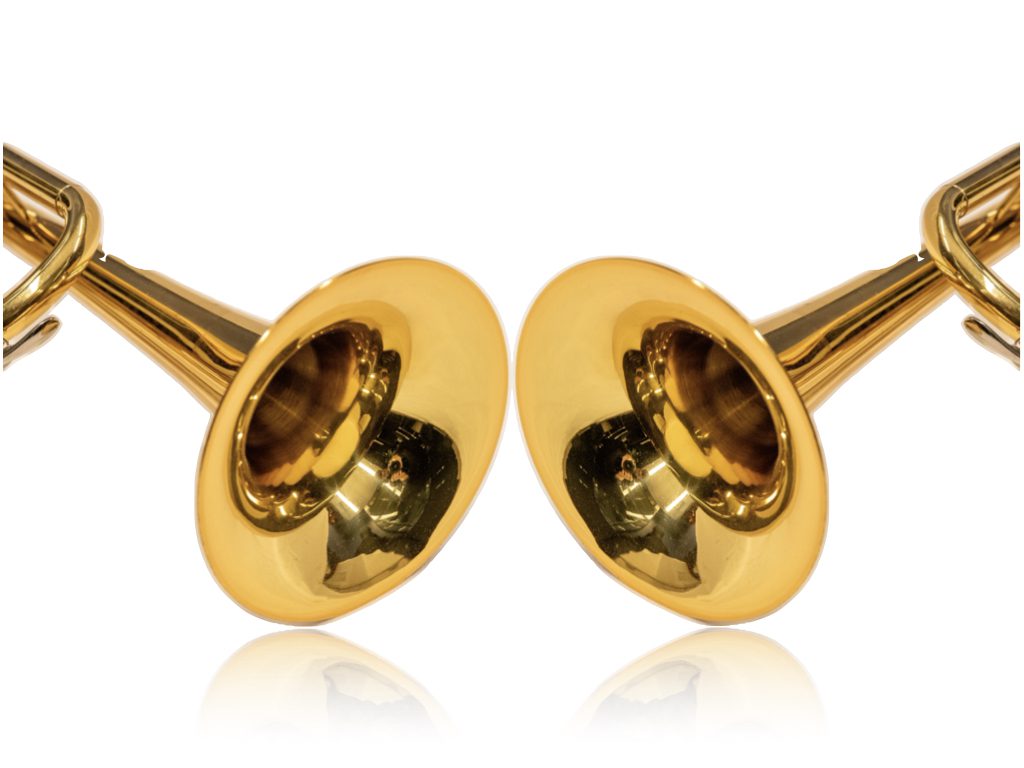Two by Two
2 fanfares for trumpets (or 2 trombones)
Instrumentation
2 trumpets (or 2 trombones)
Two By Two are two complementary fanfares written for two brass instruments, 2 trumpets or 2 trombones. Fanfare No. 1 features antiphonal writing and the second one is short, fast, funky, virtuosic piece designed to show off the instruments’ agility, predominately hocketing a single melodic line between them. They make great “bookends” for a concert program.
Program note
Fanfare No. 1 – ( = 138)
Fanfare No. 2 – ( = 96, Funky and rhythmically precise!)
I wrote the first of these two fanfares as a lark for Carl Albach of the Orchestra of St. Luke’s. I was working for the orchestra during its Caramoor summer festival and it was customary for a few of the orchestra’s brass players to play a fanfare signaling the end of intermission. I jokingly mentioned to Carl the idea of writing a short fanfare for one of the upcoming concerts, to which he replied that if I did he would try to play it. Happily he did. Sadly, I didn’t get to hear the premiere. I left St. Luke’s for another job and wasn’t even around to bring the music to rehearsal. This was in the days before the ubiquitous Internet and notation software conveniently generating PDFs, so we solved the problem via the fax machine. The fanfare was indeed played at Caramoor. Where there’s a will there’s a way.
Fanfare No. 1 features antiphonal writing – call and response between the two trumpets – and I used the old trick of creating a “shout out” to someone by making a musical representation of their name in pitch. C-A-R-L becomes the notes C-A-D (for Re)-A (for La). It’s one of the fanfare’s main motives and a nice way of saying “hello!” to Carl.
Later I added Fanfare No. 2 with the idea that each half of a summer concert program could begin with its own fanfare, creating “bookends.” This fanfare is predominately a single melodic line hocketed (divided, or bounced) between the two instruments. It is a short, fast, funky, virtuosic piece designed to show off the trumpet’s agility.
Of course, there is no hard and fast requirement that both fanfares need be programmed for the same concert, or performed in the order listed here. Feel free to pick and choose!
Spatial and acoustic separation highlight the interplay between the two parts so both fanfares work best if the performers arrange themselves on different sides of the stage or even throughout the hall.
A version of these works also exists for two trombones. Contact the composer for this version.
Listen
Score Preview
